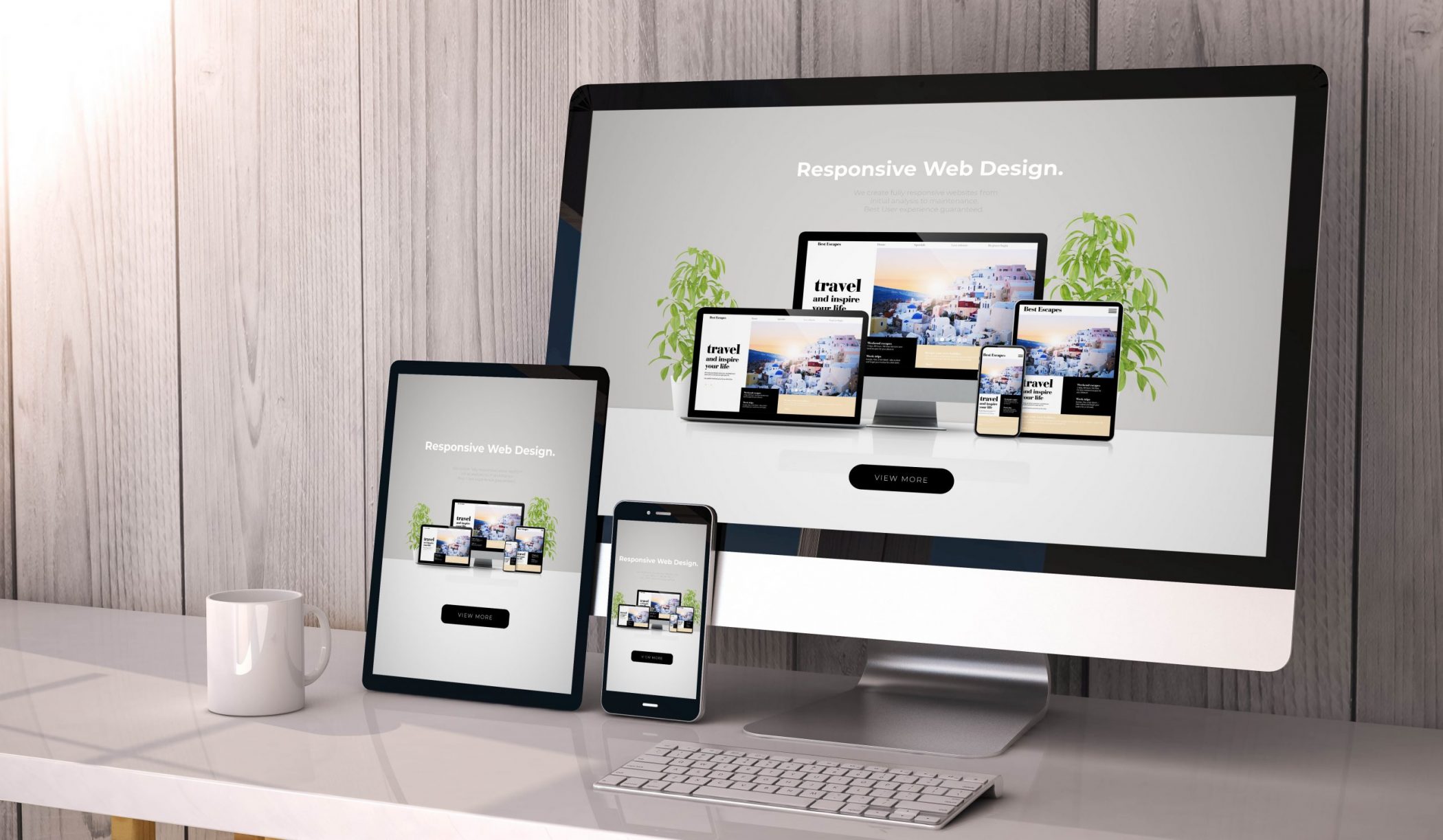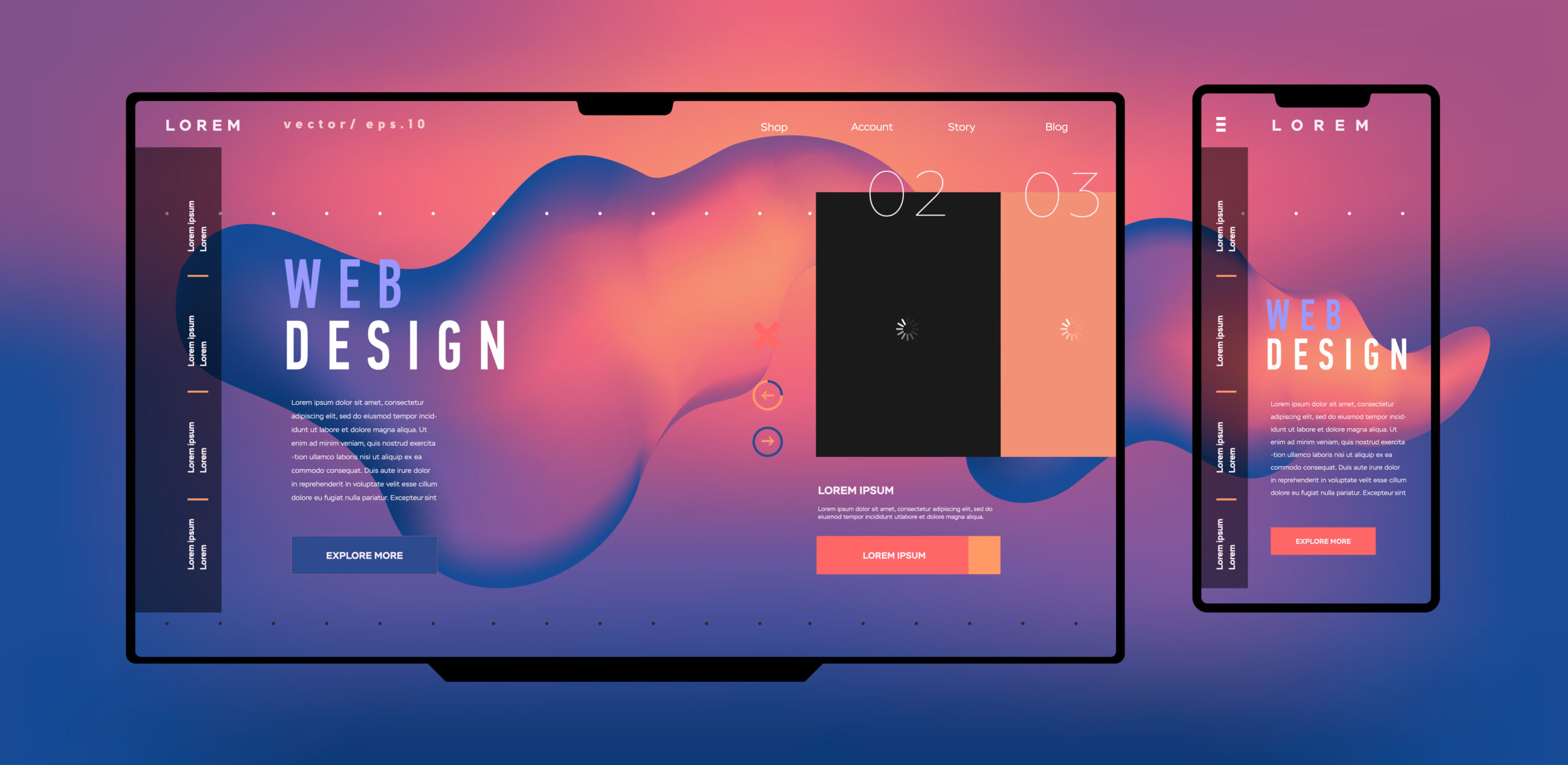The Value of User Experience in Efficient Web Design Techniques
User experience (UX) functions as a cornerstone in reliable web design approaches. It forms just how customers connect with a website, influencing their fulfillment and possibility of returning. A well-designed UX can boost engagement with instinctive navigation and responsive designs. Neglecting these facets may lead to irritation and raised bounce rates. Recognizing the complexities of UX is important for developers aiming to create engaging digital experiences that resonate with diverse audiences. What variables absolutely drive successful user engagement?
Comprehending User Experience and Its Influence On Layout
User experience (UX) is usually regarded as a simple aspect of web design, it fundamentally forms how customers communicate with a website. UX includes all elements of the user's interaction, including use, access, and total fulfillment. A favorable UX cultivates interaction, encouraging individuals to explore the website and return in the future. Alternatively, an unfavorable experience can result in stress, resulting in high bounce prices and shed opportunities for conversion.
Style elements like design, material, and navigating organization play critical functions fit this experience. Reliable UX layout anticipates user needs and preferences, guaranteeing that info is visually attractive and conveniently available. Furthermore, recognizing user behavior with analytics can offer valuable insights, educating style choices that improve use. Eventually, a complete understanding of UX permits developers to produce web sites that not just attract individuals however also advertise purposeful communications that line up with company goals and user expectations.
Secret Principles of Efficient User Experience
Efficient user experience rests on several key concepts that improve site functionality and involvement. User-friendly navigating style, receptive format essentials, and the relevance of aesthetic hierarchy are essential elements that add to a seamless communication in between users and internet material. Understanding these principles enables designers to produce even more obtainable and easy to use digital environments.
Instinctive Navigation Layout
Intuitive navigation style offers as an essential portal to their overall experience when individuals run into a site. Reliable navigating allows individuals to effortlessly find the information they seek, enhancing their communication with the site. Key principles consist of clear labeling, sensible organization, and constant positioning of navigating elements. Labels should be straightforward, enabling individuals to anticipate the web content they will discover. A well-structured power structure helps customers understand the connection in between various areas, guiding them with the internet site seamlessly. Furthermore, responsive menus and quickly available web links add to a fluid experience across gadgets. By prioritizing intuitive navigation, designers can considerably lower user aggravation and boost interaction, inevitably cultivating a favorable perception of the website and its web content.
Receptive Design Essentials
A well-structured navigation system naturally results in the requirement for a receptive layout, which is vital in today's varied electronic landscape. A receptive design warranties that websites feature flawlessly throughout different devices, including desktops, smartphones, and tablet computers. This versatility boosts user experience by allowing web content to be aesthetically meaningful and conveniently obtainable, despite display dimension. Secret concepts of receptive style include fluid grids, flexible photos, and media questions, which help with ideal watching. In addition, focusing on touch-friendly components enhances interaction on mobile gadgets. By executing a receptive design, designers can suit users' demands, reduce bounce prices, and increase interaction. Ultimately, a well-executed receptive layout promotes a favorable user experience, encouraging site visitors to discover the internet site even more.
Aesthetic Hierarchy Relevance
Visual hierarchy plays a vital function in guiding customers through an internet site, making certain that critical details catches their interest. By strategically utilizing dimension, contrast, spacing, and shade, designers can produce a clear path for customers to adhere to. Larger components usually draw the eye, showing their importance, while contrasting colors can highlight calls to action. In addition, regular positioning and group of related web content enhance comprehension, making navigation user-friendly. Efficient use of visual power structure not only enhances functionality yet also sustains the overall visual of the site, promoting a positive user experience. When individuals can quickly recognize one of the most vital details, they are more probable to involve with the material, resulting in enhanced satisfaction and communication with the internet site.
The Duty of Functionality in Web Design
Usability plays a vital role in web design, specifically via navigation simpleness and adherence to access criteria. Efficient navigation boosts user fulfillment by enabling site visitors to discover information promptly and without effort. Meeting accessibility requirements guarantees that all individuals, no matter of their capabilities, can effectively engage with the website.
Navigating Simpleness
Simpleness in navigation stands as a keystone of effective web design, significantly affecting user experience. A structured navigating system enables customers to locate information swiftly and intuitively, decreasing aggravation and enhancing contentment. Clear labeling and sensible framework are essential components, assisting individuals effortlessly via the internet site. Repetitive web links or excessively complicated food selections can confuse customers, resulting in increased bounce prices. Furthermore, mobile responsiveness needs to be considered, making sure navigating remains straightforward across gadgets. Focusing on essential pages and minimizing clutter further supports user engagement. Efficient navigating not only promotes a positive experience but additionally motivates individuals to explore the site extra completely, eventually bring about greater conversion rates. Hereof, navigation simplicity acts as a vital consider the general effectiveness of web design methods.
Access Standards
User engagement is greatly boosted when websites stick to ease of access criteria, ensuring that all users, despite their capabilities, can navigate and engage properly. Compliance with these criteria not just widens the target market but additionally boosts overall user fulfillment. Obtainable layout incorporates functions such as message options for photos, keyboard navigation, and sufficient shade comparison, which facilitate usage by individuals with handicaps. In enhancement, applying these standards can positively influence search engine optimization (SEARCH ENGINE OPTIMIZATION) by enhancing website structure and clarity. As web design evolves, focusing on availability becomes essential in promoting a comprehensive electronic environment. By welcoming these requirements, designers contribute to an extra fair web, inevitably driving user commitment and engagement.
Significance of Responsive Design for User Engagement
As customers significantly accessibility internet sites through a variety of tools, the importance of receptive layout becomes extremely important for engaging users properly. Responsive style warranties that a web site adjusts seamlessly to various display dimensions, providing an optimal watching experience despite the device made use of. This flexibility improves user interaction by facilitating less complicated navigation and communication with material.
When users experience a site that is receptive, they are most likely to stay longer, explore additionally, and return in the future. A properly designed receptive design decreases the irritation usually connected with zooming and scrolling on smaller displays, thereby lowering bounce prices. In addition, responsive style can favorably influence online search engine positions, as internet search engine prioritize mobile-friendly web sites. In today's digital landscape, where mobile usage remains to rise, applying receptive design is not simply useful, yet crucial for preserving user interaction and ensuring a positive experience throughout all tools.
Enhancing Load Times for Better User Fulfillment

To boost load times, internet developers should prioritize optimizing pictures, leveraging internet browser caching, and minimizing HTTP demands. Furthermore, employing Web content Delivery Networks (CDNs) you can find out more can speed up content shipment by dispersing it throughout different geographic locations. Simplifying code, such as compressing CSS and JavaScript files, further adds to faster filling speeds.
Inevitably, a dedication to enhancing load times not just enhances user contentment yet additionally enhances brand name commitment and enhances the chance of repeat check outs. A swift, smooth experience is crucial for keeping users and promoting positive interactions.
The Influence of Visual Power Structure on User Communication
Aesthetic power structure acts as a necessary element in leading user communication on a site. By organizing web content in such a way that focuses on information aesthetically, designers can influence just how users engage and browse with a website. This power structure is developed through numerous style strategies, consisting of size, color, comparison, and spacing. Bigger typefaces or bold shades attract interest to vital elements, such as telephone calls to action or headings, while suppressed colors and smaller sized font styles can indicate subservient information.
Reliable visual power structure assists users rapidly recognize what is crucial, reducing cognitive load and boosting usability. It allows for user-friendly navigating, making it much easier for individuals to discover what they require without stress. As customers interact with a website, a well-structured visual pecking order fosters a much more rewarding experience, eventually leading to greater engagement and conversion rates. Developers should prioritize these principles to produce a reliable and user-centered web atmosphere.
Gauging User Experience: Methods and devices

Frequently Asked Questions
Exactly How Can I Improve My Web site's User Experience on a Spending plan?
To boost a website's user experience on a spending plan, one can optimize web page tons speed, streamline navigation, carry out responsive design, improve material quality, and collect user feedback for continuous refinements, ensuring an enjoyable visitor experience.
What Prevail User Experience Blunders to Prevent in Web Design?
Typical user experience errors in web design include messy designs, inadequate navigating, slow-moving packing times, absence of mobile responsiveness, disregarding ease of access, inconsistent branding, and look these up stopping working to focus on user responses - Website Design Agency. Each can considerably impede general site efficiency
Exactly how Typically Should I Update My Internet Site for Better User Experience?
Internet sites need to be upgraded consistently, preferably every couple of months, to preserve suitable user experience. Constant updates aid address use concerns, freshen material, and adapt to changing user demands, making certain the website stays pertinent and engaging.

Can User Experience Effect SEO Rankings on My Site?
User experience can substantially affect search engine optimization rankings, as search engines focus on sites that offer seamless navigating, quick packing times, and interesting material. A positive user experience can result in reduced bounce rates and higher search presence.
What Role Does Access Play in User Experience Design?
Availability plays an important role in user experience design by making sure that all individuals, no matter of capabilities, can engage and browse with an internet site successfully. This inclusivity boosts total satisfaction and involvement among diverse users.
User experience (UX) is often perceived as a plain facet of internet layout, it essentially shapes you could check here how users connect with an internet site. User involvement is substantially enhanced when web sites stick to accessibility standards, ensuring that all users, regardless of their capacities, can browse and engage successfully. Determining user experience (UX) is essential for comprehending exactly how successfully a web site meets the needs of its users. Additionally, use screening, where actual customers browse the website while onlookers keep in mind troubles, uses direct feedback on user experience. Common user experience mistakes in internet style consist of chaotic designs, poor navigating, slow packing times, absence of mobile responsiveness, neglecting availability, inconsistent branding, and stopping working to prioritize user feedback.